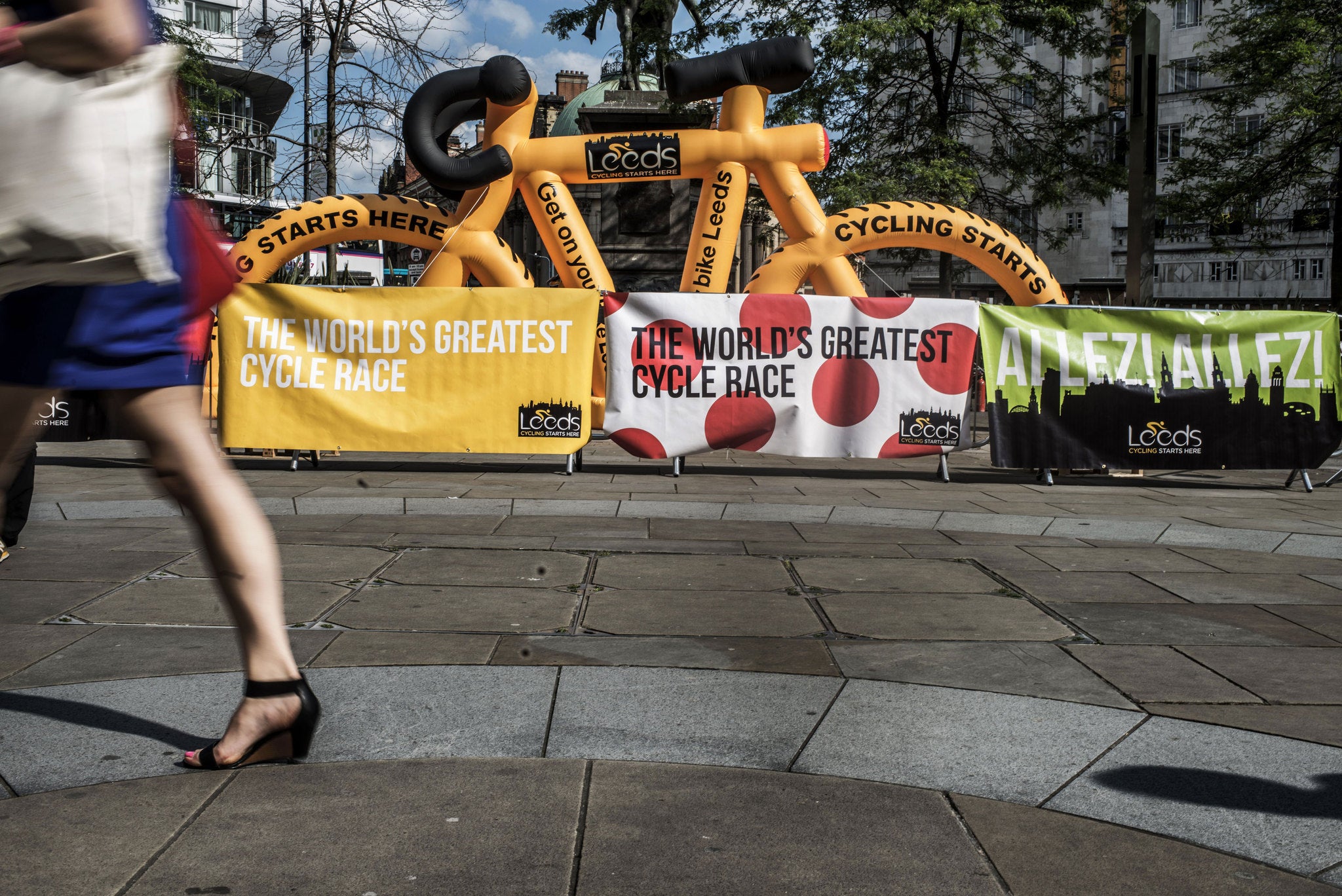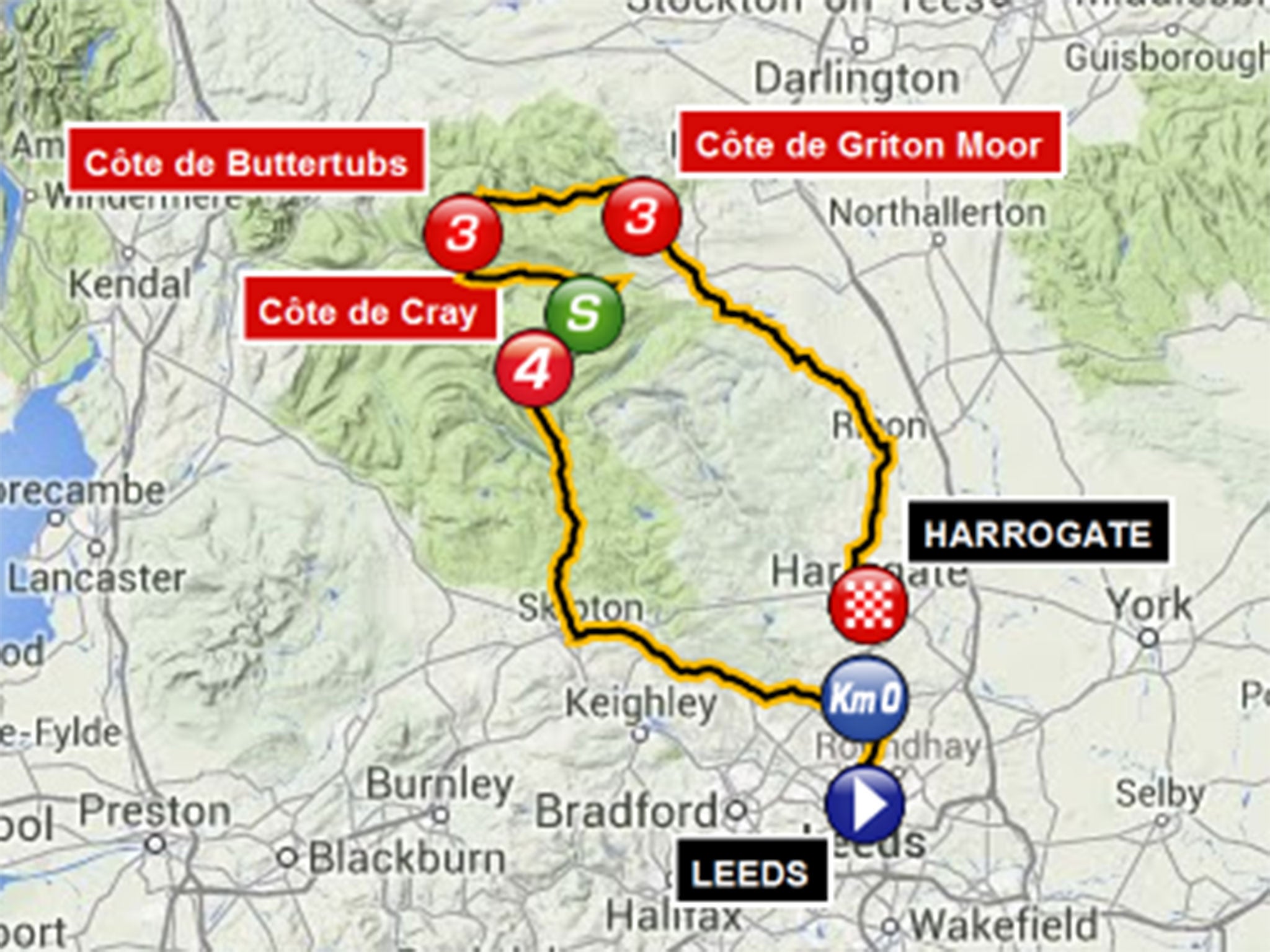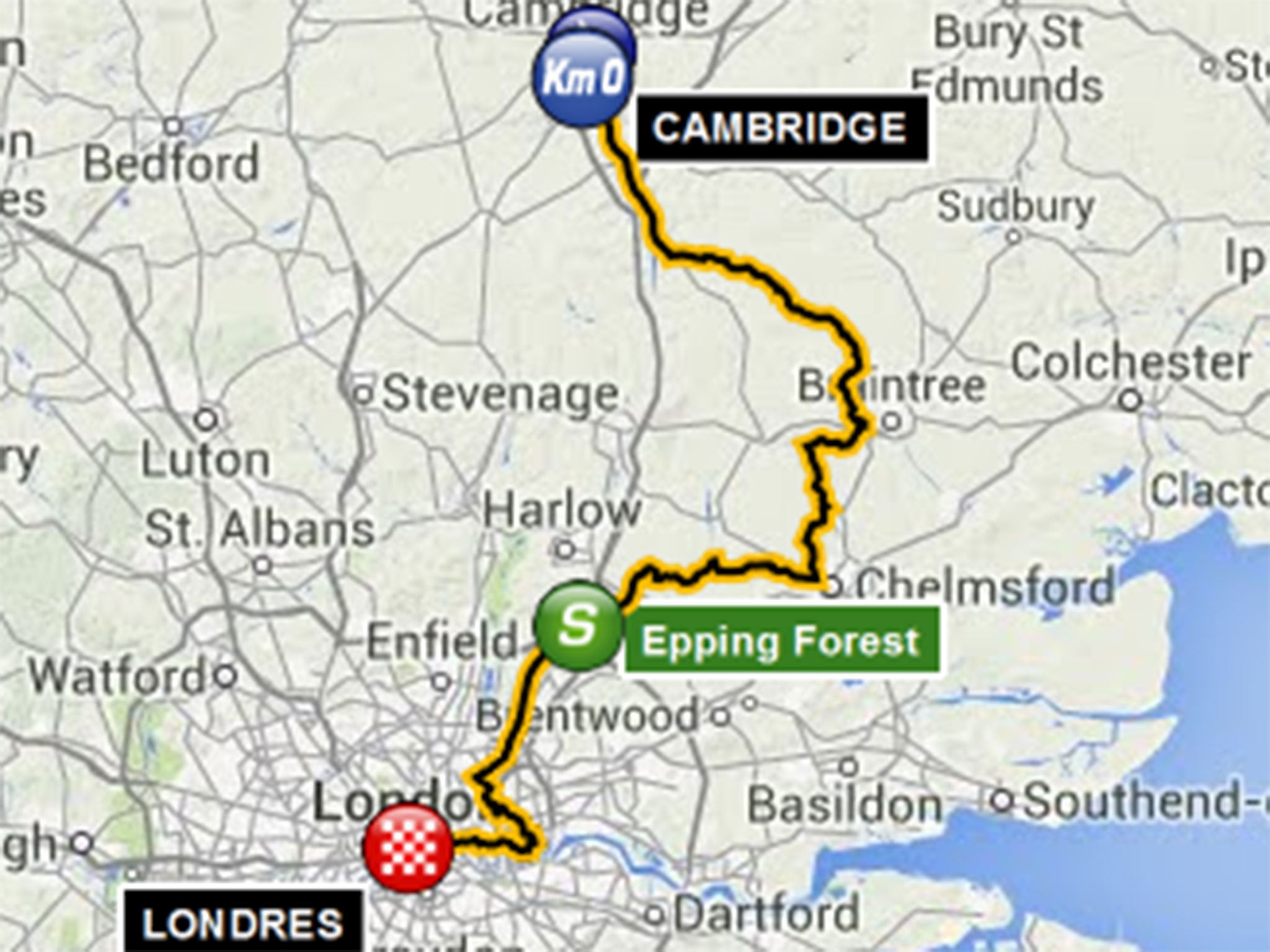Tour de France route 2014: Guide to British stages of Le Grand Tour
A guide to the Tour de France route as it returns to Britain for the first time in seven years

Describing any sporting event as ‘intriguing’ risks damning it with faint praise- or slapping it around the face with the most backhanded of compliments. Yet the word is apt for this Tour de France route that takes in Pennine hills, hellish cobbles and three different mountain ranges.
This year is heavy on summit finishes but light on iconic climbs- there’s no Mont Ventoux or Alpe d’Huez, though the legendary Col du Tourmalet does make an appearance. But instead of limiting the excitement, the lack of big-name climbs could well make the racing more intriguing than usual.
The 2014 Tour promises to be a war of attrition from the moment the riders leave Leeds city centre on Saturday morning. There’s no traditional short prologue to give the riders an opportunity to ease into the race, rather a frenetic sprint stage that may prove too hilly for the peloton’s heavier fast men.

Things don’t get any easier on Stage 2, a Classics-style 198 kilometre slog through the Peak District that includes nine categorised climbs. The narrow Pennine roads will test the riders as much as the gradients of the hills- Jenkin Road in Sheffield where the stage finishes reaches 33 per cent at points.
The third and final British day should be the most sedate of the lot. It’s a bucolic 155km jaunt into London via the Olympic Park and ending on The Mall that should give the pure sprinters their first opportunity of a victory. There are no classified climbs and an awful lot of flat countryside, so there’s a good chance for a breakaway to go clear at some point too.
The Tour finally crosses the Channel for Stage 4 for a sprinters’ day from the beach resort of Le Touquet-Paris-Plage into metropolitan Lille. Look out though for crosswinds that could blow the race wide open.
Stage 5 is where things get really interesting. 15.4km of cobbled roads will test the mettle of the yellow jersey contenders- expect chaos on the Carrefour de l’Arbre, a particularly hellish section used by the particularly demonic Paris-Roubaix race.
The countryside around Reims is a sprinter’s paradise. Stage 6 through Champagne country is predominantly pancake-flat, with only two minor, 4 category climbs. Stage 7 passes through similarly level ground.
Next come three tough days in the Vosges Mountains- France’s unofficial third mountain range. Stage 10 looks like the biggest killer, ending in a summit finish at La Planche des Belles Filles where Chris Froome won in 2012. Before that the riders cross the climb of Petit Ballon- the first mountain ever used in the Tour, in 1905.
After a well-earned rest day come two transition stages that should favour breakaways, before Stage 13 which ends with a monster 18km climb to the Alpine ski station of Chamrousse. That’s followed by a second day in the Alps and another summit finish, this time to Risoul at 1,855m altitude.
Stage 16 begins all sweetly and innocently along the western edge of the French Riviera before a drawn-out fight up the irregular Pyrenean climb of Port de Balès, followed by a dangerous descent into the spa town of Bagnères-de-Luchon.

Yet another summit finish looms at the end of Stage 17 which crosses into Spain and back in just 125km of racing. That makes it the shortest road stage of the Tour- and potentially the hardest, too.
Hautacam- even the name is brutal, conjuring up images of straining legs and heaving lungs. Stage 18 finishes atop this terrible Pyrenean mountain, the scene of the Dane Bjarne Riis’ astonishing attack on his way to winning the 1996 Tour. Before that comes the Col du Tourmalet, whose history is as long and storied as the Tour’s itself. An infernal day, this one.
Stage 19 is flat to Bergerac- even John Nettles might have a chance of finishing this one amongst a worn-out peloton. It’s followed by what could be a time-trial through the Dordogne. This Tour has the fewest number of kilometres against the clock since the 1934 edition, so this late stage could well be crucial.
And the end! After 20 days’ competition, Stage 20 is the usual ceremonial route through the outskirts of Paris, ending on the Champs Élysées after seven increasingly charged laps around the city centre.
Whoever ends up wearing yellow on the top step of the podium come the 27 July will certainly have earned it after this relentless route.
Join our commenting forum
Join thought-provoking conversations, follow other Independent readers and see their replies
Comments